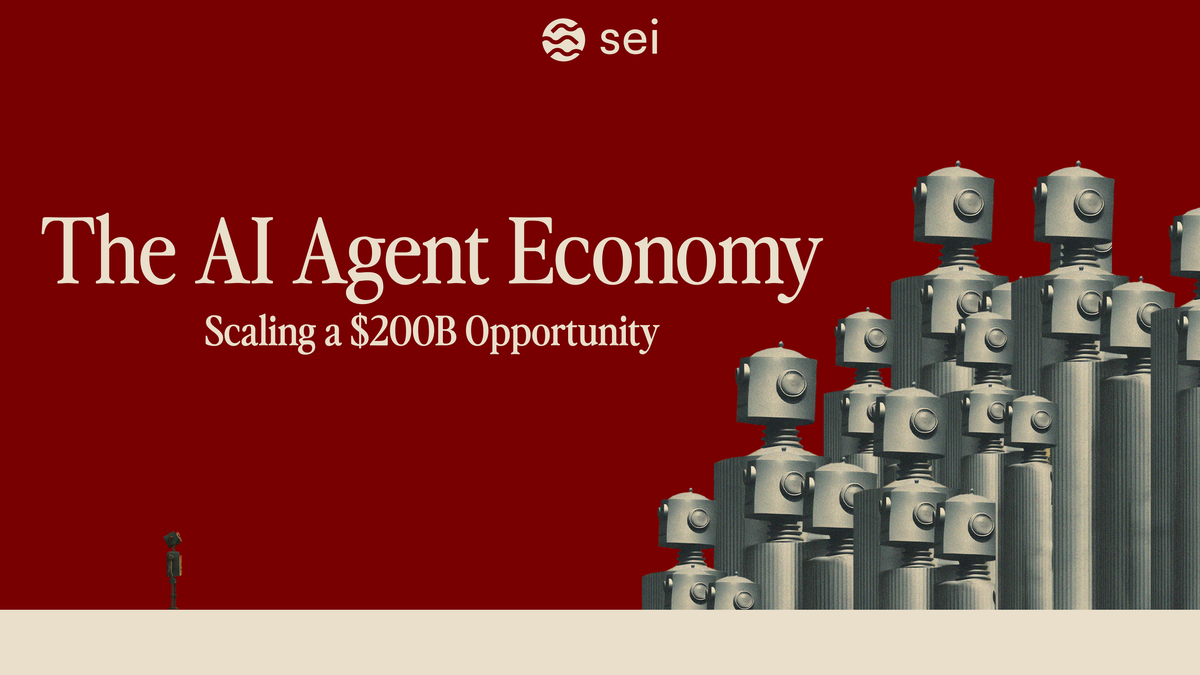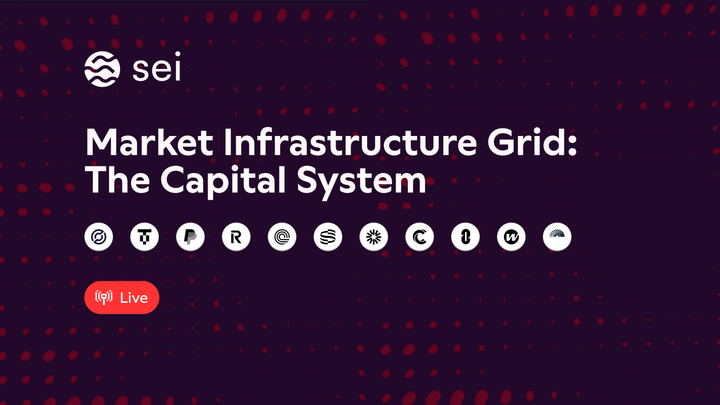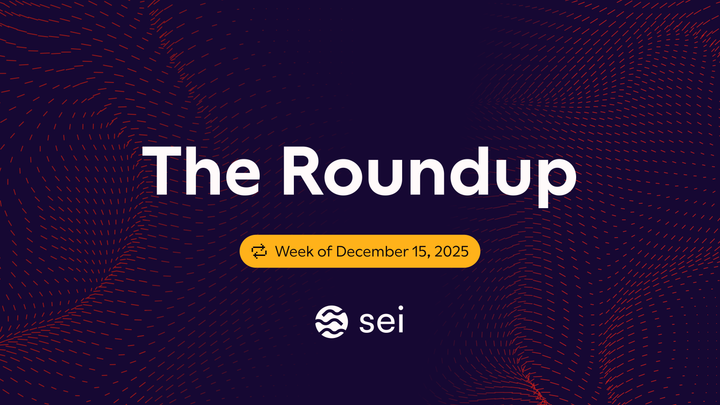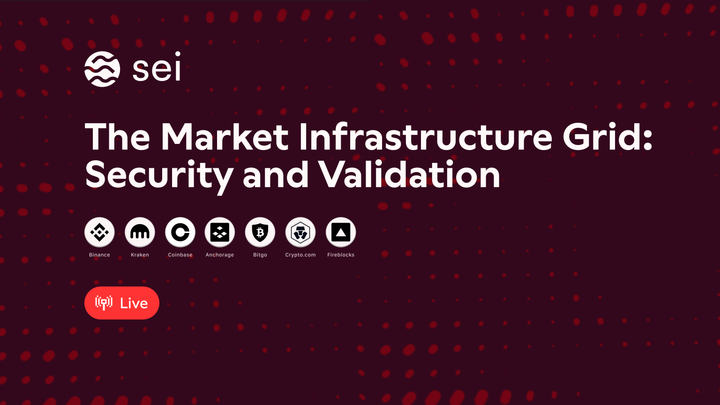Building the Rails for a $200B+ AI Agent Economy

In the not-so-distant future, an economy will exist where millions of AI agents coordinate, negotiate, and transact in milliseconds. Where supply chains rebalance globally in real-time. Where financial markets operate with superhuman precision. Where new forms of economic organization emerge that are impossible at human speeds.
This vision remains unrealized simply because the infrastructure hasn’t existed to support it. Agentic AI is an effective individual tool, but agents lack the ability to exchange value with one another autonomously, requiring human intermediation across their workflows.
AI agents need value exchange that is programmable, permissionless, global, micropayment-friendly, and instant. Traditional payment systems require human intermediation and accounts, and are too slow/expensive for AI-to-AI commerce. Blockchain provides programmable money that AI agents can control directly.
AI agents can already think, analyze, and make decisions faster than any human, but they're forced to wait for the ability to exchange value, accelerate their skills, and work across networks rather than in silos.
By the early 2030s, analysts forecast AI could unlock $15 trillion in global economic activity. And for agents specifically, the opportunity is ripe for blockchain disruption. At CES 2025, NVIDIA CEO Jensen Huang declared that "the age of AI Agentics is here" and called agentic AI "a multi-trillion-dollar opportunity."
Multiple market research firms support this vision, with forecasts showing the agentic AI market growing from $5.2 billion in 2024 to $196.6 billion by 2034 at a 43.8% CAGR. But this transformation requires infrastructure capable of facilitating autonomous value exchange systems, and designed to enable machine thinking, not human decision-making.
Sei Giga is that infrastructure.
From Tools to Economic Actors
Today: AI as Software Tools
Current agentic AI applications represent a nascent but rapidly growing market. According to multiple research reports, the global agentic AI market is valued at $7 billion in 2025, with current applications primarily focused on:
- Algorithmic trading platforms: $2.36B (still require human oversight)
- AI call centers: $2.1B (handle scripted interactions)
- Supply chain automation: $1.8B (optimize existing processes)
- Crypto trading bots: $0.17B (execute pre-programmed strategies)
But, today's AI agents are constrained by payment bottlenecks:
- Must wait for humans to authorize transactions
- Cannot hold money or make autonomous financial decisions
- Limited to pre-funded accounts with usage caps
- Cannot transact with other AI agents directly
These limitations keep AI agents operating as tools rather than economic actors.
Tomorrow: The Multi-Trillion Dollar Agentic Economy
NVIDIA CEO Jensen Huang's prediction of a "multi-trillion-dollar opportunity" is backed by explosive growth projections from leading research firms:
- Market.us: Agentic AI market growing from $5.2B in 2024 to $196.6B by 2034 (43.8% CAGR)
- Grand View Research: Enterprise agentic AI growing at 46.2% CAGR
- Emergen Research: Market reaching $367.68B by 2033 (31.68% CAGR)
The transformation is already accelerating. By 2028, projections suggest that nearly one-third of all enterprise software will embrace agentic AI, compared to less than 1% today.
The future economy will likely feature AI agents that:
- Own digital assets and manage their own wallets
- Negotiate contracts with other AI agents in real-time
- Provide services and earn revenue independently
- Make investment decisions based on real-time data analysis
- Coordinate complex operations across global networks
- Create new markets that didn't exist before
We're witnessing the emergence of artificial economic actors, AI systems that participate in commerce as independent entities. And for that, they need the rails for value exchange.
Speed as a Fundamental Requirement
AI agents process information and make decisions in under 100 milliseconds. They can analyze market conditions, identify opportunities, and coordinate with other agents faster than any human system.
Their potential when allowed to transact is extraordinary. Real-time arbitrage across global markets. Instant resource allocation based on demand. Multi-agent coordination that scales to millions of participants. But the barrier to realizing this potential is a lack of real-time, autonomous rails. In AI-vs-AI markets, the fastest agent wins, making infrastructure speed the ultimate competitive moat.
Why Blockchain Anyway?
AI agents need autonomous financial capabilities that traditional systems cannot provide:
- Permissionless Operations: Traditional finance requires human authorization and institutional relationships that autonomous agents cannot establish
- Programmable Logic: Payments need to trigger automatically based on code conditions
- 24/7 Global Access: No banking hours or geographic restrictions
- Micropayment Economics: Sub-cent transactions must be economically viable
- Trustless Coordination: Agents need to transact without trusting counterparties
Traditional payment systems require human oversight at every step. Only blockchain enables truly autonomous economic actors.
Sei Network's Technical Specs
The Sei Network is the world’s fastest EVM blockchain. With real-time speed, and a friendly EVM building environment, the Sei Network is a clear choice as the home of agentic AI, especially when the story moves from single agents to multi-agent networks:
- Sub-400ms finality: Transactions complete faster than human reaction time
- 5 gigagas throughput: Once Giga is released, Sei Network can handle millions of micro-transactions per second
- Twin Turbo Consensus: the current V2 network is optimized for trading and coordination
- Parallelized execution: Multiple transaction types processed simultaneously
Economic Viability for AI Agents
Unlike traditional payment systems that charge percentage-based fees, Sei Network's ultra-low transaction costs (fractions of a cent) make AI-to-AI micropayments economically viable. This enables new business models impossible on other networks:
- Micro-services pricing: AI agents can charge per API call, per data point, or per millisecond of processing
- High-frequency coordination: Agents can afford to negotiate and re-negotiate continuously without fee burden
- Granular resource allocation: Sub-cent pricing enables precise resource markets
x402 Protocol Compatibility
Sei Network's architecture supports emerging standards like Coinbase's x402 protocol, which enables AI agents to make autonomous HTTP-based payments. This positions the Sei Network as the natural blockchain fit for:
- Autonomous API payments: AI agents paying for services in real-time
- Cross-agent resource sharing: Direct agent-to-agent commerce without human intervention
- Scalable AI economies: Supporting millions of agents transacting simultaneously
The combination of machine-speed finality and micro-cent economics makes the Sei Network the only viable infrastructure for the trillion-dollar agentic AI economy.
Building Tomorrow's Infrastructure Today
The AI agent economy represents the evolution of commerce to machine-speed, autonomous, and limitless coordination.
This transformation creates demand for infrastructure designed for machine thinking: sub-millisecond coordination, massive throughput, and purpose-built architecture for AI agents.
The Sei Network is that infrastructure, the foundation for an entirely new form of economy.
The future is machine-speed. It will run on Sei Giga.
Sources
- $15T AI Economic Impact: PwC "Sizing the Prize" study projects $15.7T AI impact on global GDP by 2030
- Current AI Market Revenue: Algorithmic trading platforms $2.36B, AI call centers $2.1B, Supply chain automation $1.8B, Crypto trading bots $0.17B
- Sei Network Technical Specs: Sub-400ms finality, 5 gigagas throughput, Twin Turbo Consensus
- McKinsey AI Research: Generative AI economic potential $2.6-4.4T annually
- Gaming Market Reference: Gaming industry $187.7B in 2024



